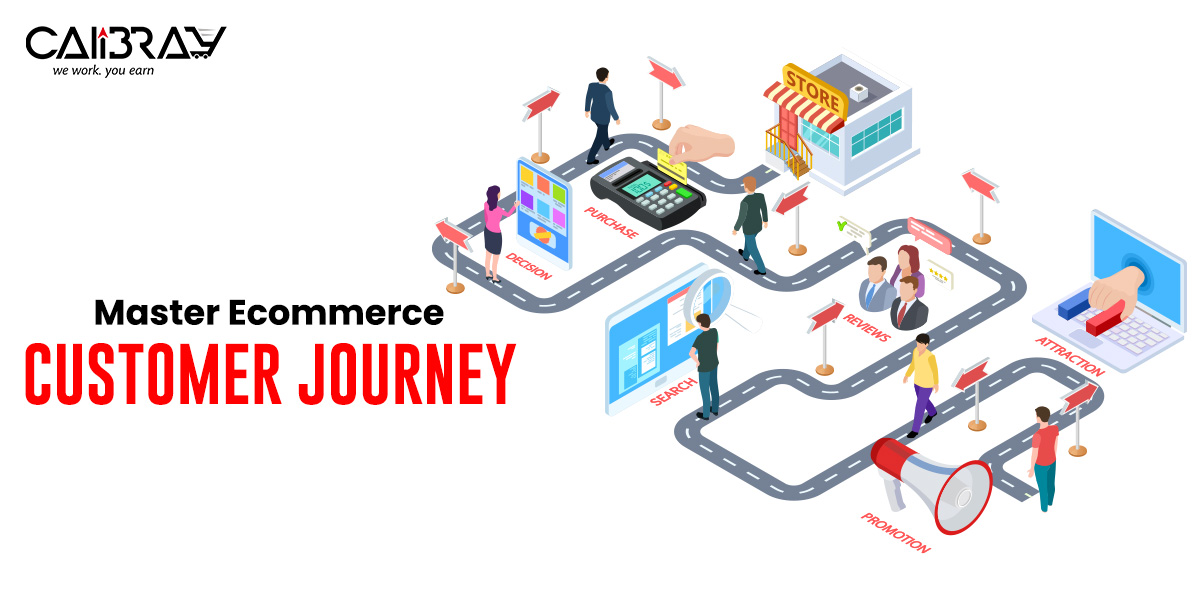Blog Inner Page
E-commerce Customer Journey: Strategic Marketing Blueprint
12/08/2023 & 14:16 PM
|Uploaded By: Admin

In the rapidly evolving landscape of Ecommerce, understanding your customer's journey is paramount to building a successful marketing strategy. The Comprehensive Guide to E-commerce Customer Journey Marketing Maps delves into this crucial aspect, offering insights, strategies, and expert advice to help you navigate the complex terrain of customer engagement and conversion.
The Comprehensive Guide to E-commerce Customer Journey Marketing Maps
As an online business owner or marketer, your ultimate goal is to convert potential customers into loyal patrons. The Customer Journey Marketing Map is an invaluable tool that visualizes the path your customers take from their first interaction with your brand to making a purchase and beyond. By comprehensively understanding this journey, you can tailor your marketing efforts to address specific needs and pain points at every stage, resulting in higher conversions and improved customer retention.
Exploring the Customer Journey
Understanding the customer journey involves dissecting it into distinct stages, each marked by unique interactions and considerations. Here's a breakdown of the essential stages:
Awareness Stage:
This is where potential customers become aware of your brand's existence. It's crucial to make a strong first impression. Leverage content marketing, social media, and SEO to capture their attention.
Consideration Stage:
At this point, customers are actively researching solutions to their needs. Provide valuable content such as blog posts, guides, and comparison articles to position your brand as an authority.
Decision Stage:
Customers are ready to make a purchase, but they're comparing options. Highlight the unique value of your products, offer limited-time promotions, and ensure a seamless purchasing process.
Purchase Stage:
Congratulations, you've made a sale! Provide excellent customer service, send confirmations, and express gratitude to enhance the post-purchase experience.
Post-Purchase Stage:
The journey doesn't end at the purchase. Engage customers with personalized follow-ups, recommendations, and loyalty programs to foster long-term relationships.
Crafting Your Marketing Map
Creating an effective Customer Journey Marketing Map involves a meticulous process. Here's a step-by-step guide to crafting one:
-
Research and Data Collection: Gather insights about your target audience, their preferences, pain points, and behaviors. Utilize tools like Google Analytics, surveys, and social media insights.
-
Identify Touchpoints: Map out the touchpoints where customers interact with your brand. These include your website, social media, emails, and ads.
-
Define Goals: Set clear goals for each stage of the journey. Is it brand awareness, lead generation, or direct sales? Tailor your strategy accordingly.
-
Content Strategy: Develop a content plan that addresses the needs of customers at each stage. Create content that educates, entertains, and solves problems.
-
Personalization: Leverage customer data to personalize interactions. Send targeted emails, recommend products based on past purchases, and provide relevant content.
-
Testing and Optimization: Continuously analyze the effectiveness of your marketing efforts. A/B tests different strategies, monitor metrics, and make data-driven adjustments.